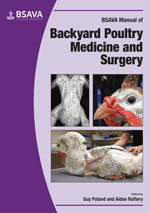
Full text loading...

This chapter describes routes of administration for medicines, methods for sexing poultry and euthanasia techniques. The text and figures are complemented by practical tip and warning boxes, to provide readily accessible information.
Clinical techniques, Page 1 of 1
< Previous page | Next page > /docserver/preview/fulltext/10.22233/9781910443194/9781910443194.9-1.gif

Full text loading...


















